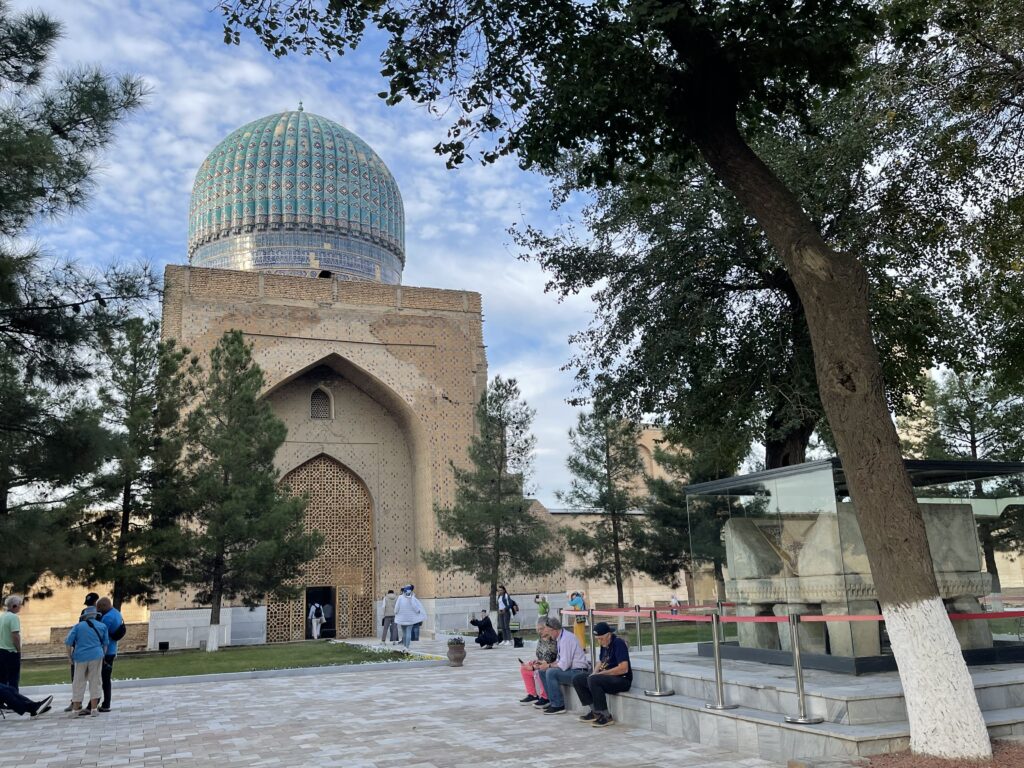Uzbekistan in Central Asia offers hundreds of historical places of interest, a number of unique festivals, and a warm welcome from a hospitable culture. Famous for its Islamic architectural monuments and bazaars selling aromatic spices, tea and fruits, tourism in Uzbekistan is seeing a resurgence.
If you’re considering a trip to this Silk Road destination, planning around the seasons becomes essential due to the country’s potential for extreme weather conditions. Understanding the best time to visit Uzbekistan is crucial for an enjoyable experience.
This concise guide covers Uzbekistan’s weather, seasons, annual events, and other essential factors to help you decide when to visit Uzbekistan based on your personal preferences.
When is the Best Time to Visit Uzbekistan?
For the best travel experience, the ideal time to visit Uzbekistan is during the pleasant spring months of April, May, and early June or the cool but sunny autumn months of September and October.
During these periods, the weather remains pleasantly sunny without reaching uncomfortable heat levels, allowing you to enjoy your trip without being impeded by the weather.
November and March can also be great times to visit Uzbekistan as the number of tourists dwindles yet the skies often remain clear and sunny. The quieter months often offer more affordable hotel rates.
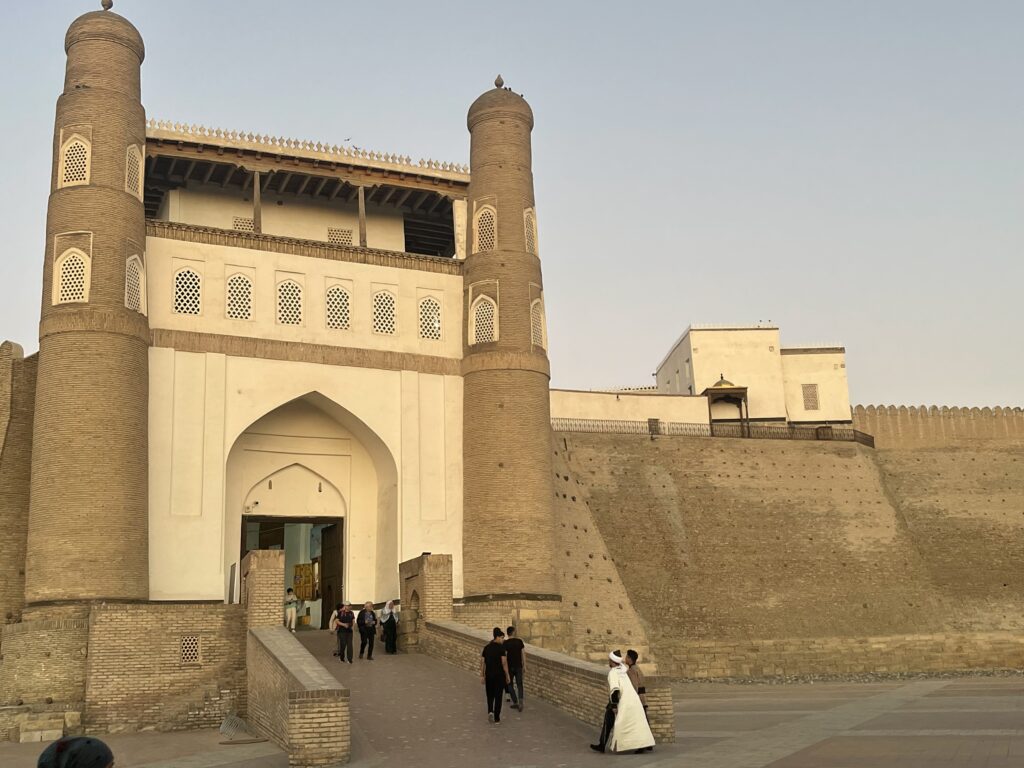
When to Not Visit Uzbekistan
Due to the heat, the summer months of July and August are best avoided as the majority of your day time will be spent hiding from the scorching sun. It’s much more enjoyable to visit Uzbekistan during the months of spring or autumn.
While winter in Uzbekistan is bearable, bear in mind that temperatures can fluctuate wildly. The winter of 2023 saw temperatures drop to below -20°C for several days. Although this was quite unusual, it’s wise to pack extras just in case.
RELATED POST: Most Beautiful Places to Visit in Uzbekistan
Uzbekistan in Spring
Uzbekistan Weather in Spring
Spring in Uzbekistan, from April to early June, brings a delightful climate with temperatures ranging from the mid to high 20s Celsius (50 to 60 Fahrenheit).
The season begins with showers in March, gradually transitioning into drier weather, making exploration easier. However, occasional rain persists, particularly in late March and early April. Despite these showers, the country’s main attractions remain relatively uncrowded during this time.
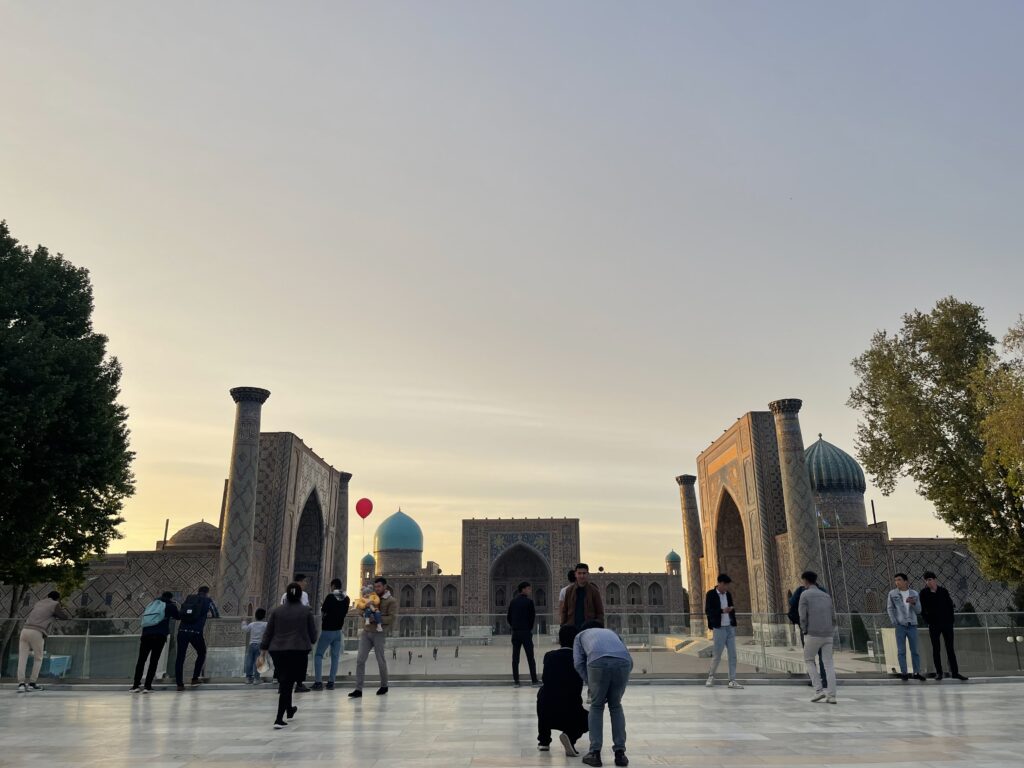
Festivals, Events, and Activities in Spring
The arrival of spring brings the vibrant celebrations of Navruz, the Persian New Year, observed on March 21st. This two-day national holiday transforms Uzbekistan into a hive of activity with colorful carnivals, traditional dances, and sumptuous seasonal feasts.
Festivities continue through May with events like Victory Day and the Silk and Spice Festival in Bukhara, offering a cultural experience involving music, performances, and artists.
Spring also brings a flurry of new life to the countryside, including the blossoming of wildflowers, notably red poppies and tulips, adorning the Tien Shan Mountains from late March to May.
Visitors can partake in the Boysun Bahori, a folklore festival in May, celebrating local traditions in the Surkhandarya Province.
Uzbekistan in Summer
Summer Weather
The summer months in Uzbekistan, from late June through August, bring scorching heat and dry conditions. Temperatures soar well beyond 30 Celsius (above 80 degrees Fahrenheit) and often surpass 40°C (104°F).
The northern desert regions experience extreme heat, making it uncomfortable for extended outdoor activities.
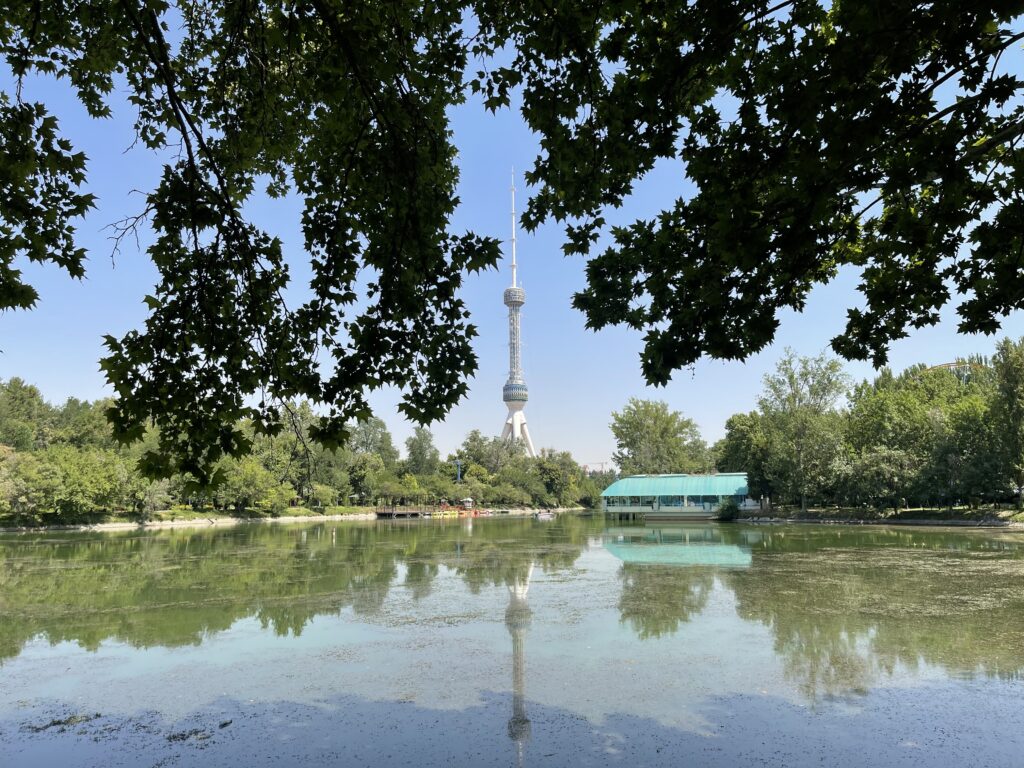
Challenges and Limitations
Visiting during July and August can be uncomfortable due to intense heat, especially for overland travel without air conditioning. While the mountains in eastern Uzbekistan offer slightly cooler temperatures, the plains and deserts endure high temperatures, making it almost impossible for leisurely exploration during the day.
Alternative Activities and Tips for Summer Travel
In spite of the heat, the mountains in the eastern regions provide a reprieve, allowing for trekking and outdoor activities.
To navigate the sweltering climate, touring major cities becomes feasible by exploring sights during mornings or evenings and seeking refuge in air-conditioned spaces during the daytime.
Visitor Experience and Recommendations
Summer marks a decrease in visitor numbers due to the harsh climate, leading to lower prices and fewer tourists. Despite the heat, evenings become vibrant, offering a holiday-like atmosphere with active nightlife.
Local advice suggests scheduling sightseeing during cooler hours, engaging in indoor activities like museum visits, art classes, or spa treatments during the scorching afternoons.
Summer is a great time to enjoy the country’s music festivals with Samarkand’s Sharq Taronalari international music festival, which occurs every two years. Stihia DJ festival also occurs in summer in its new location near Bukhara.
Uzbekistan in Autumn
Autumn Weather
Autumn in Uzbekistan, particularly from September to early November, presents mild and pleasant temperatures ranging from 21˚C (70˚F) to 30˚C (86˚F). The season offers comfortable conditions for exploration, making it an ideal time to visit.
September heralds the return of the tourist season with reasonable temperatures across the country. October maintains sunny days with comfortable weather, especially in southern regions like Bukhara, Samarkand, and Surkhandarya.
By November, cooler temperatures arrive, accompanied by sporadic rainfall, making it slightly colder in cities like Samarkand and Tashkent.
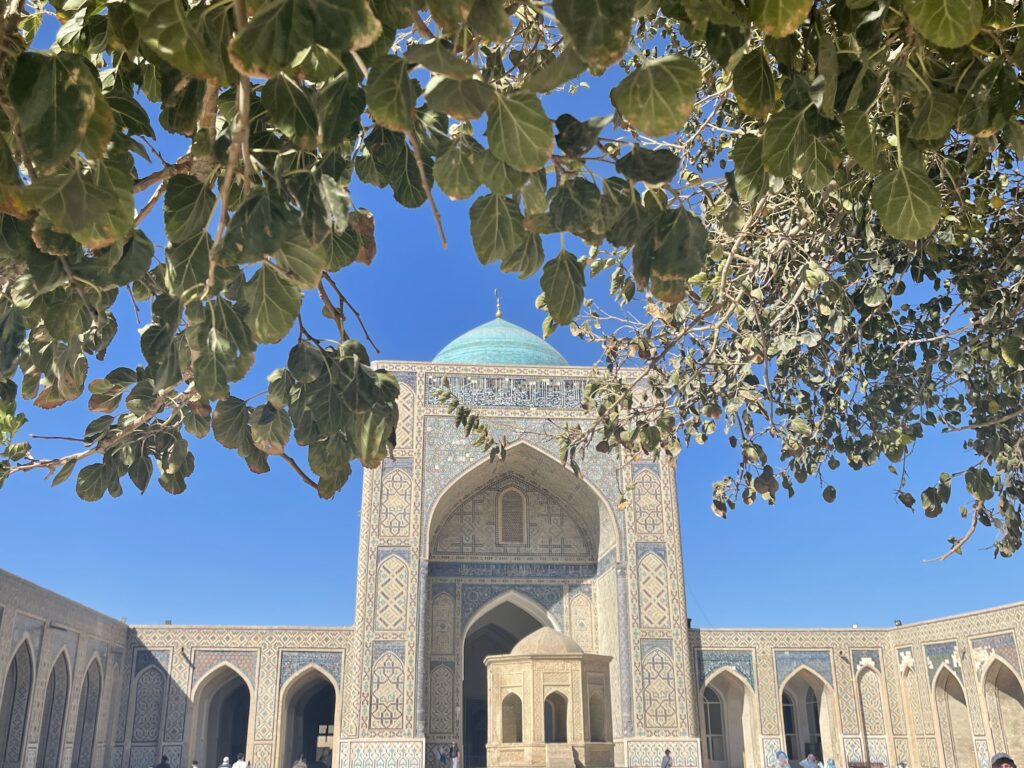
Autumn Highlights and Activities
The cooler temperatures from September onwards create a favorable environment for sightseeing and experiencing the country’s intriguing historical towns and Islamic architecture such as those in Bukhara.
Moreover, autumn marks the harvest season, enriching the bazaars with an abundance of fresh fruits, including melons, mulberries, figs, and persimmons.
Autumn paints Uzbekistan with vibrant shades of red and brown as foliage transforms the country into a picturesque canvas. The canals and parks of Tashkent are particularly vibrant at this time of year.
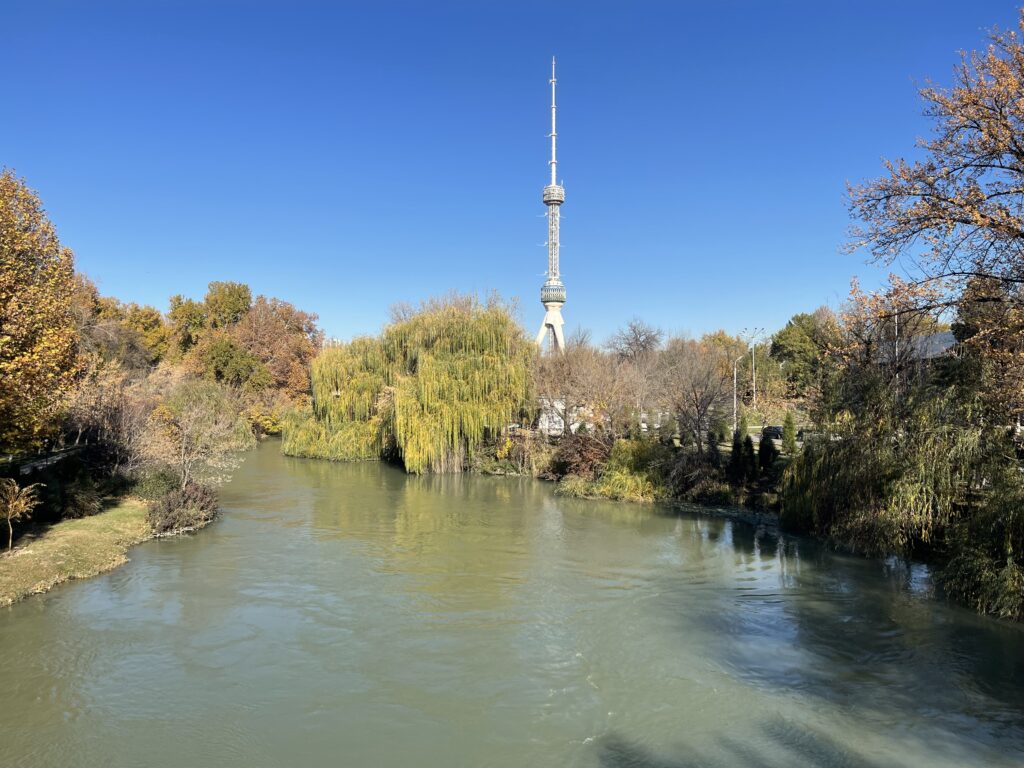
The autumn season allows for comfortable cross-country train travel, camel rides in the desert, and exploring the country’s picturesque landscapes.
Additionally, visiting the Fergana Valley during harvest time, offers a unique experience as their grape vines ripen and their season comes to a climax.
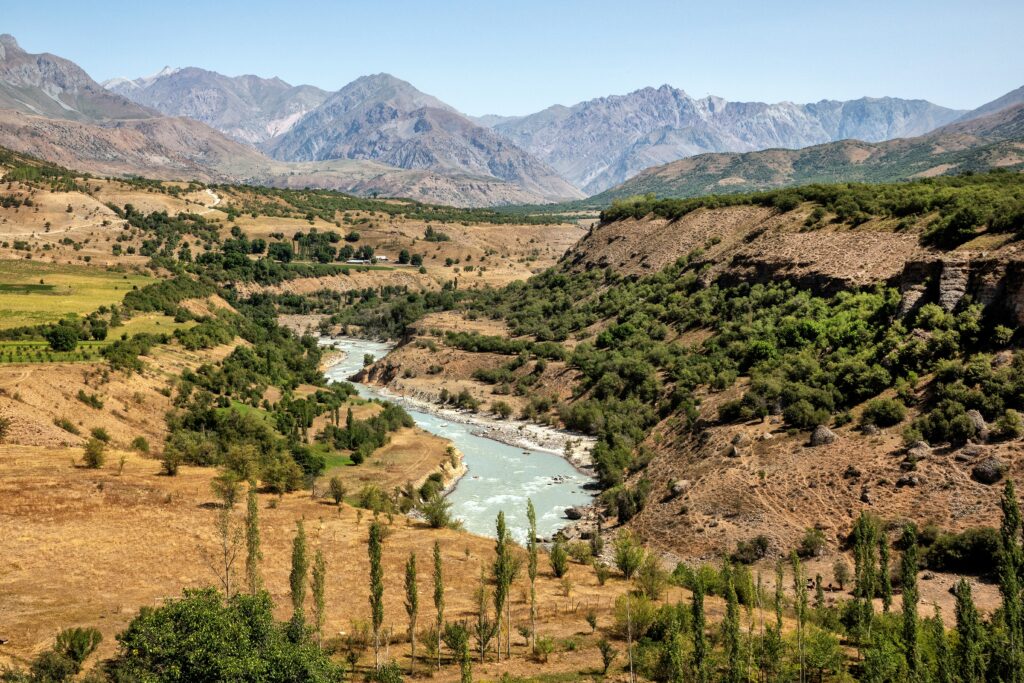
Uzbekistan in Winter
Winter Weather
Winter in Uzbekistan lasts from late November to February, marked by sub-zero temperatures, especially in mountainous regions that experience heavy snowfall.
November and December witness a decline in temperatures and tourist numbers, while January and February emerge as the coldest months.
Despite the cold, the cities boast a manageable climate, with intermittent cold spells balanced by clear, sunny days, perfect for capturing picturesque scenes.
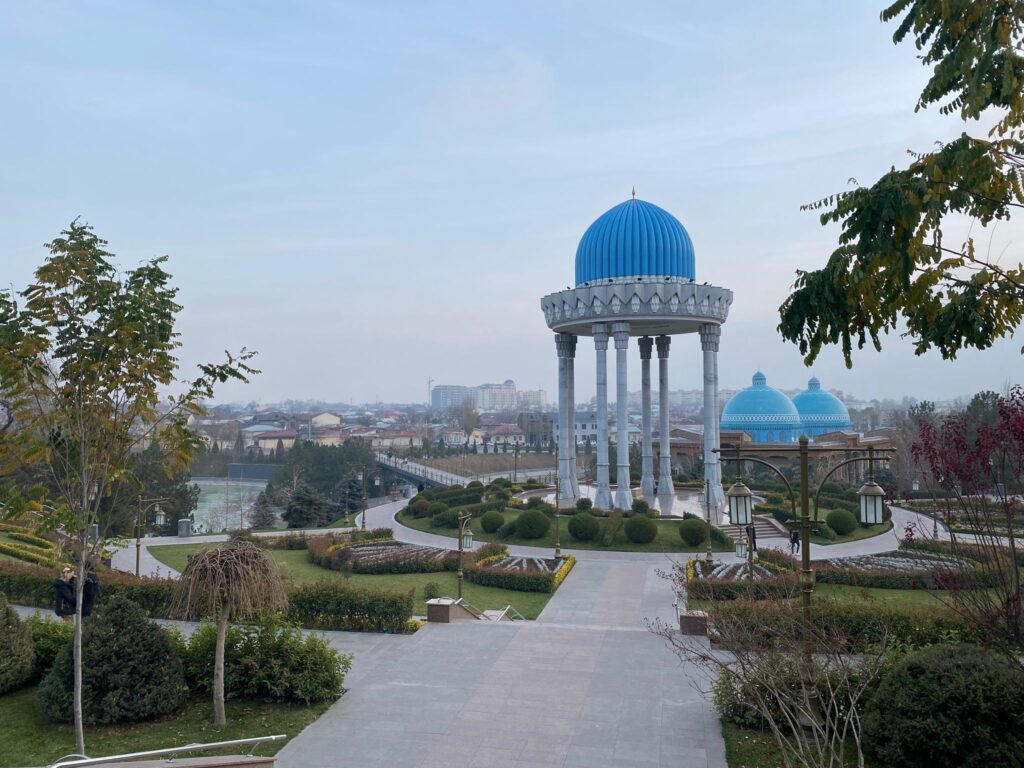
Winter Activities and Adventures
Winter in Uzbekistan presents advantages such as fewer crowds at cultural sites, allowing for a more intimate exploration of the country’s heritage. Moreover, flights and accommodations tend to be more affordable during this off-peak period, making it an attractive option for budget-conscious travelers.
This season caters to winter sports enthusiasts, with Uzbekistan’s growing ski resorts in the Tien Shan Mountains becoming a hub for skiing and snowboarding enthusiasts. From December to March, these months offer optimal conditions for winter activities in Uzbekistan.
RELATED POST: Is Uzbekistan Safe to Visit for Tourists?
No matter when you choose to visit Uzbekistan, planning ahead is key. The weather can be unpredictable, so pack a variety of clothes. Top hotels tend to fill up fast, so booking ahead is crucial. Make sure to secure everything well in advance to ensure a smooth trip.
For more information on planning your trip, read our Uzbekistan Travel Tips List.
